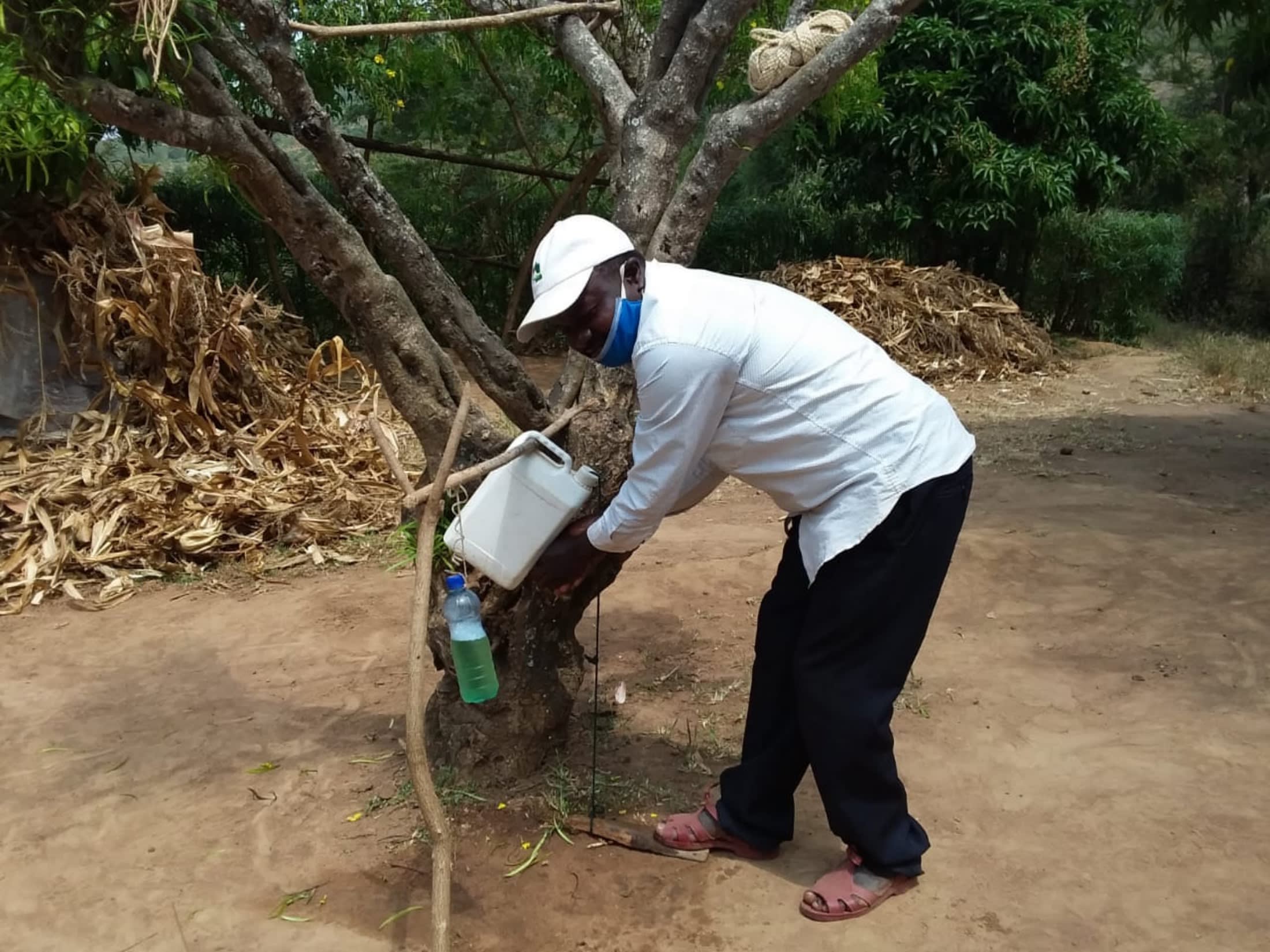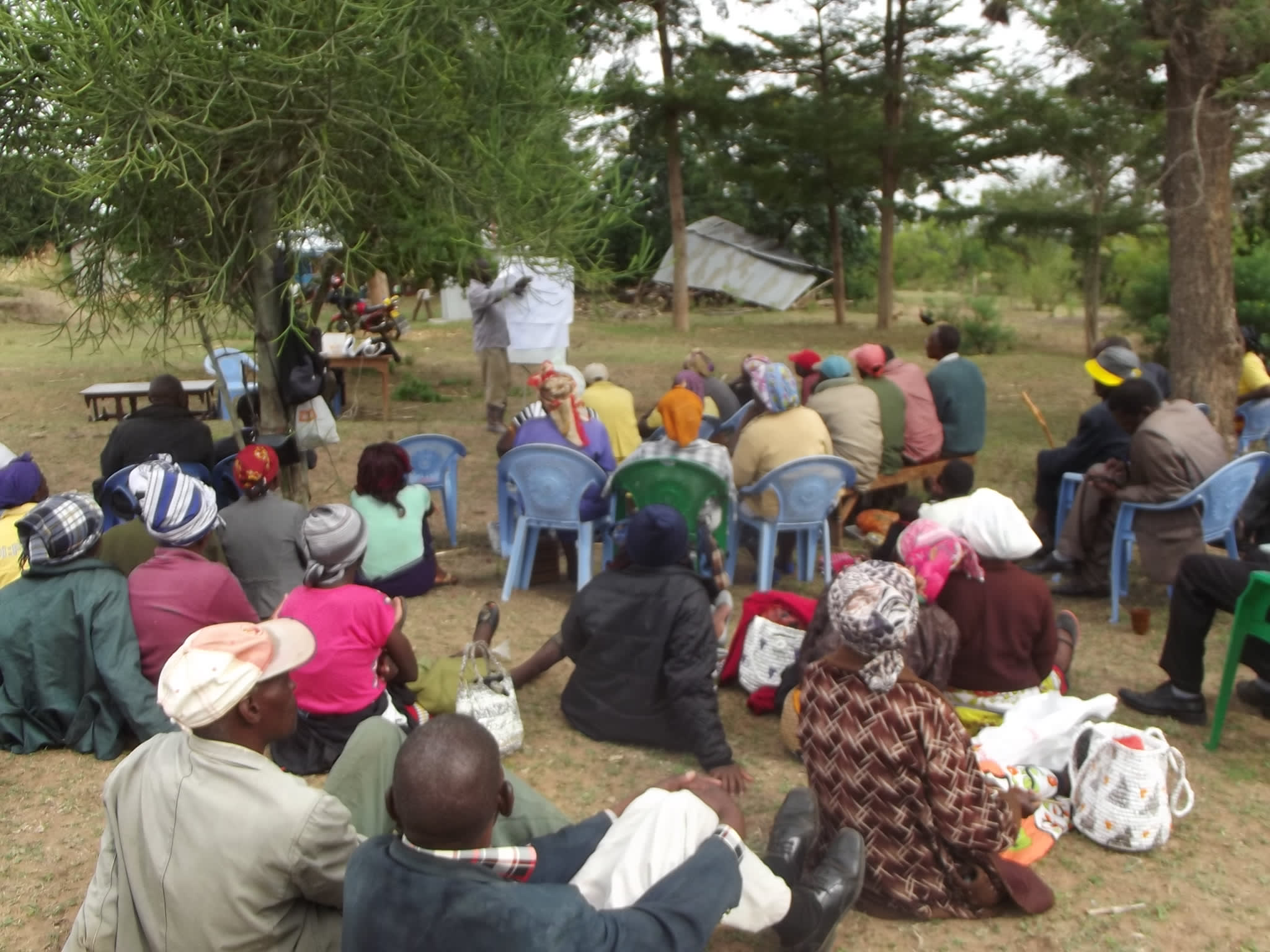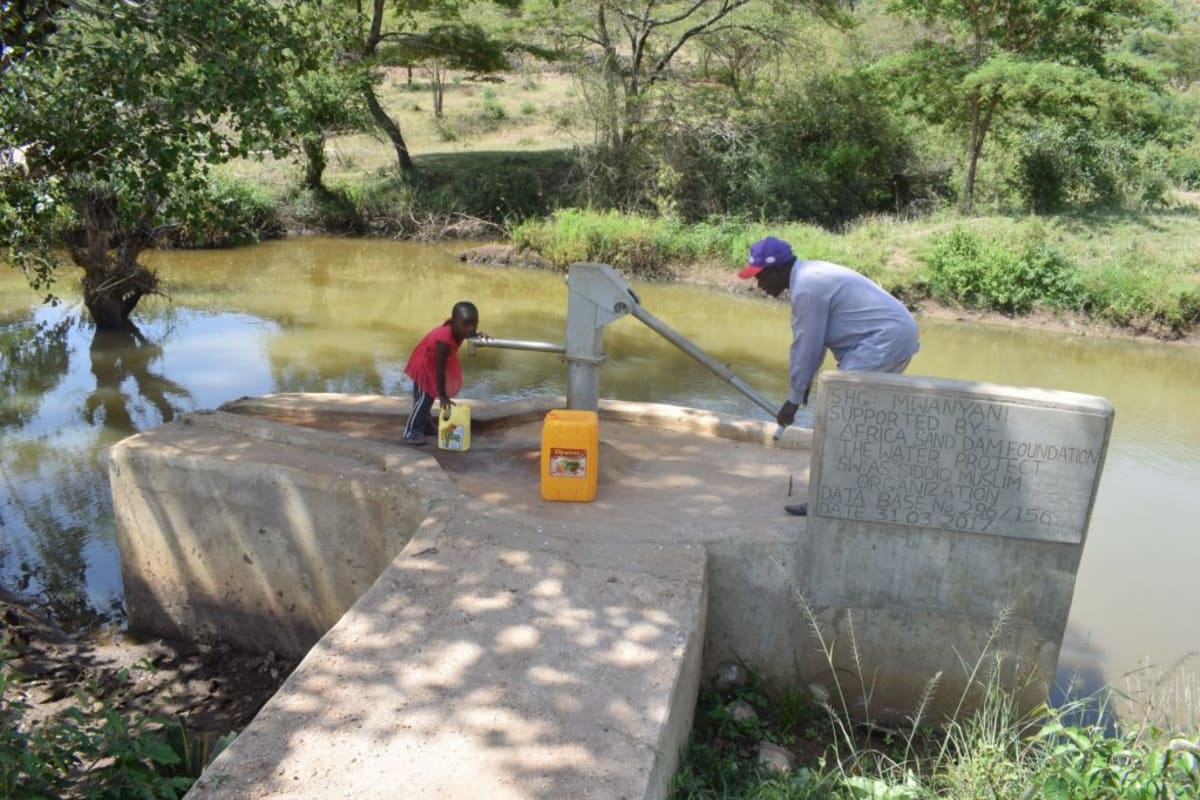This project is a part of our shared program with Africa Sand Dam Foundation. Our team is pleased to directly share the below report (edited for clarity, as needed).
Welcome to the Community
Mwanyani Self-Help Group is located in Ilinge Village of Machakos County, Kenya. It was formed in the year 2016 and now has a membership of 84 people: 36 males, 52 females. "Mwanyani" means space, because it’s located in a space between hills.
The average family size in this area is seven, while the average age of group members is 45. 37% of the members say that their main source of income is casual labour (possibly working on others' farms), while 33% are those farmers who rely on their produce as income. 17% said that they rely on a given salary at the end of the month thanks to a steady job, while the remaining 8% run small businesses. There is a small portion of people who rely on the trading and selling of livestock.
Water Situation
The main source of water for people in this area is the river. At first look the river appears dry, but community members know that if they dig a hole in the sand, they'll hit water. These holes are muddied by the surrounding sand, and are open to contaminate from many other sources. The water in the riverbed is especially dangerous during and after heavy rains. Feces, chemicals from local farms, and other waste is washed into the water. These scoop holes are also unguarded and open to wandering animals that need a drink (or a bath!).
Women carry a plastic jerrycan and a smaller container to the river, using one to fill the other. Tying a strip of cloth around the jerrycan handle, women use their forehead to support the heavy weight of dirty water all the way home. Once home, it is emptied into larger storage containers anywhere between 200 and 1500 liters. These are typically found outside the front door and in the kitchen. A covered container of water is left in the living room for any thirsty guests who visit.
The water collected from the river is used for drinking, cooking, irrigating farms, and cleaning. After drinking, community members suffer from waterborne diseases.
Sanitation Situation
All of the families living around the river have their own latrine. Some are in great condition, while others need to be rebuilt.
A few homes have hand-washing stations, and most have helpful tools like dish racks and clotheslines. After speaking with some of the women in charge of their households' hygiene and sanitation, we learned that everyone here wishes to improve both their personal and environmental hygiene. They said that this would be possible only if water was brought closer to their homes!
Plans: Hygiene and Sanitation Training
To address gaps in hygiene and sanitation practices in Ilinge Community, training will be offered to self-help group members on two consecutive days. The members will learn about useful practices and tools to improve health, and then will be able to share those with their families and neighbors. Water transport, storage, and treatment methods will be taught, and hand-washing will be a focus. Group members will learn how to make their own hand-washing stations with everyday materials. When implemented, these training topics ensure that water and food remain safe until consumed, and that each person and their environment is kept clean for the greatest possible impact.
Participants will also form a water user committee that manages and oversees the new water points implemented over the next few years.
Plans: Sand Dam
This sand dam will be one of many construction projects to come in the next few years. We will spend a total of five years unified with this community to address their clean water shortage. More sand dams will be built to transform the environment. As the sand dams mature and build up more sand, the water table will rise. To safely access this water, hand-dug wells will be installed adjacent to the dams.
This particular sand dam is being built at the same time as an adjacent hand-dug well (click here to see), so group members will allocate their efforts and resources accordingly. The phases of sand dam construction include material mobilization, excavation down to the bedrock, and building the wall. The completed sand dam is projected to be 69.7 meters long and 4.45 meters high!

 Sand Dam
Sand Dam
 Rehabilitation Project
Rehabilitation Project
































